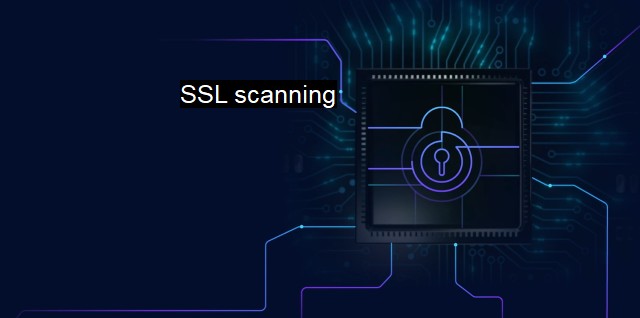What is SSL scanning?
Enhancing Network Protection: An Introduction to SSL Scanning in Antivirus Software
Secure Sockets Layer (SSL) is a universal norm for establishing an encrypted link between a server and a client. This could be a web server (website) and a browser, or a mail server and a mail client, usually used to ensure that all data shared between these servers and browsers remain encrypted and, therefore, private. SSL scanning is an essential security measure in the current cybercrime environment that forms part of a broader cybersecurity strategy.SSL scanning, also known as SSL Inspection or SSL Interception, refers to the process used by security tools like firewalls and antivirus software to monitor and detect whether an SSL/TLS certificate is using encryption properly or not. This can check a multitude of indicators, depending on the cybersecurity solution. an SSL scan looks into whether a current certificate is trusted, whether the certificate is correctly installed, up to date, or contains the correct domains.
SSL communication is commonly broken down into two distinctive parts – the handshake and the data transfer. During the handshake phase credentials are issued, with both the client and the server authenticating each other and establishing the methodology for how data is going to be deciphered. Meanwhile, during data transfer, data is sent back and forth between the server and the operating system while staying private and tamper-proof, safeguarding it from potential security threats.
When it comes to SSL scanning, a cybersecurity system must effectively act as a man in the middle, proxying SSL traffic. The SSL scanner intercepts SSL/TLS traffic, then the outbound data is decrypted by the scanner in order to scan and analyze it for potential threats. Post scanning, the data is re-encrypted and sent to the client. This is instrumental in identifying and destroying threats hidden in SSL traffic before it reaches the endpoint.
This idea may raise eyebrows since the SSL scanning process sounds similar to a man-in-the-middle (MITM) attack, where an attacker intercepts the communication between two parties without them knowing. SSL scanning is usually discussed within a trustworthy context as your cybersecurity or antivirus solution is the one performing the interception and the intention is directed towards protecting the network, rather than infiltrating and harming it.
The Importance of SSL scanning in cyber security is predicated upon the increasing number of attacks being made using SSL as a means of infiltrating organizational security. Cyber criminals are switching strategies to use trusted channels, knowing that many organizations blindly trust SSL traffic. This is where SSL scanning steps in, offering a more stringent check for any malicious elements.
It must be mentioned that while SSL scans help increase security networks, some limitations come with it. For instance, older devices within some networks often do not support modern SSL standards, leading to failures in connecting or high rates of false positives. some SSL scanning tools may not support all Cipher suites leading to occasional lapses in traffic.
Influential challenges in SSL scanning include privacy since scanned SSL data would typically include any sensitive information sent during the handshake phase. While this is vital for ensuring secure data management, organizations must ensure encryption keys attain a strict level of access control to avoid possible misuse.
Overlooking SSL scanning could leave major network blind spots for attackers to exploit. With the increasing use of encryption to secure communication between organizations and users, ensuring that attackers are not exploiting the trusted SSL/TLS protocol to deliver their payload is imperative. Hence, proper SSL scanning is a foundational process in any strong cybersecurity infrastructure.

SSL scanning FAQs
What is SSL scanning?
SSL scanning is a process of examining SSL/TLS certificates and their associated domain names, IP addresses, and other information about the SSL/TLS certificate, to detect any vulnerabilities or potential security threats.How does SSL scanning help with cybersecurity?
SSL scanning can help with cybersecurity by identifying potential security vulnerabilities in websites, servers, or software. It assesses the strength of SSL/TLS encryption and highlights weaknesses that could be exploited by hackers, malware, or other cyber threats.Do antivirus programs perform SSL scanning?
Yes, many antivirus programs implement SSL scanning as a feature to protect their users from potential cyber attacks. Antivirus software can scan encrypted traffic for malicious content, such as malware, viruses, or trojans.Is SSL scanning legal?
Yes, SSL scanning is legal as long as it is done with the owner's consent or for legitimate security purposes. However, SSL scanning without permission or for malicious reasons can be considered illegal and may carry legal consequences.| | A | | | B | | | C | | | D | | | E | | | F | | | G | | | H | | | I | | | J | | | K | | | L | | | M | |
| | N | | | O | | | P | | | Q | | | R | | | S | | | T | | | U | | | V | | | W | | | X | | | Y | | | Z | |
| | 1 | | | 2 | | | 3 | | | 4 | | | 7 | | | 8 | | |||||||